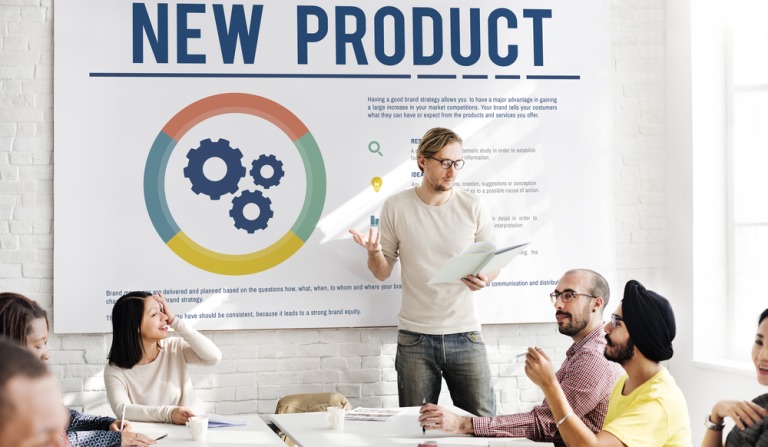
5 Key Factors To Consider When Developing An MVP
The Lean Startup, written in 2011 by Eric Ries, changed the process of product development by introducing several new concepts. Chief among them was the idea of starting with a minimum viable product, or MVP, to build, test and validate the core features of a new product before developing the final product.
Collecting end-user feedback early in the process and iterating with quick improvements helps get to a more productive product earlier in the process and avoid failure. In today’s software development world, developing an MVP is common practice.
An MVP should include features that address the end-user’s major pain points, while limiting the number of features included to those considered core to the product. Additional features can be added in subsequent updates to build a more complete product. An MVP allows the development team to prioritize core functionality and features in order to provide maximum value to the end-user while collecting feedback for quick updates.
Developing an MVP allows the product owner to minimize upfront costs while focusing on the most important user priorities initially. Let’s discuss a few of the most important factors when developing an MVP.
Conduct Market Research
42% of startups fail because there is no market need. MVP development follows a three-step process to ensure a new product meets a market need: Learn – Build – Measure. The first step in building a successful MVP is understanding who the application is being built for. Who is the target end-user? What are his/her major pain points?
Data-driven market research can help identify user demographics, pain points and needs, backgrounds, position in the ecosystem, device preferences, level of experience with technology and other factors.
Hiring a professional market research agency to help with this is great if available. However, that isn’t always necessary. If companies know their markets and end-users well and can be open and objective, they can conduct their own research through surveys, interviews, online research and competitive research. Spending time understanding end-user desires, pain points and current solutions will help identify the most important features to build into the application. Analyzing competitors objectively is also important to understanding which features to include in order to create points of differentiation.
Identify Key Objectives
It is important to establish a primary objective when building an MVP. Whether building an application for user research, market validation, investment or selling purposes, having a primary objective will help provide focus and clarity of decision making as the team works through the project. The product owner will want to establish the primary objective and ensure the entire team understands the objective. This will help resolve many issues before arising and will help settle disputes when they do arise.
Choose Core Features
A good MVP development plan includes creating user personas for key target users and applying learnings from the market research to establish the product’s Unique Value Proposition (UVP). The UVP, or unique selling proposition (USP), is a concise, straight-to-the-point statement about the benefits the product offers customers. It’s an explanation of what makes the product different.
When you understand the end-user, his/her goals and your vision for the product, you will be able to identify the primary features to incorporate into the product. Selecting features that address end-user needs and opportunities while differentiating the product competitively will form the basis of a unique and valuable product.
Think through the User’s Journey
Once key features are identified, it is important to think through the mind of the end-user(s) and understand how they will interact with the product. Creating a workflow diagram for end-user(s) will cause the product owner to consider all key user interactions in the user’s journey, identify potential pitfalls and avoid unnecessary features and missteps. This will help avoid rework during the development phase.
Build the MVP
It’s important to consider the technology stack, team members required for the development phase and development methodology when planning the building phase. When selecting a set of technologies for your MVP, it helps to think about the following:
- The product’s functionality: The MVP’s functionality and features will determine the choice of technology. Is the application going to be a web, mobile and/or enterprise app? Will it be on-premise or in the cloud? Does it need to connect to other applications to share or consume data? Does it need to store and quickly access data?
- Scalability: Although the MVP isn’t the final product and will likely have limited reach in the beginning, planning the architecture to be scalable for later growth will save later rework.
- Ease of Changes: It will be important to have the flexibility to make quick changes to the MVP post-launch with the customer feedback that will be collected.
- Development Methodology: Another major consideration is the software development methodology. Though many companies still employ a traditional waterfall process, more organizations today than not utilize one of several versions of an agile development process. This is too detailed of a discussion for this post, but more can be found on wikipedia on the subject. Be sure to scroll down to the section “Agile Software Development Methods” to see a list and descriptions of the 15+ agile methodologies. Choosing agile over the traditional waterfall is recommended here due to cost-effectiveness, seamless collaboration, ease of change, scalability, and faster software delivery.
Collect Feedback & Measure Results
Upon launching the MVP, it will be important to track the performance of the app(lication) and collect user feedback. This will help determine if the business’ and end-users’ needs have been met and what updates or tweaks will be needed in the next product update. In addition to customer feedback, identifying key business indicators in advance and creating a tracking and feedback process will ensure key learnings are captured. These learnings should be fed back to the product owner and design & development team to help determine improvements to make during the next sprints.
Conclusion
Building an MVP allows the testing of the viability of the product idea in the market and provides a feedback loop to continue working on the product in subsequent phases. It is also a cost-effective alternative and can provide some immediate income in some cases. Lastly, employing these ideas can help develop an MVP that better meets user’s needs, delivers on the product’s vision and business goals and gets the business into the market with a new product more quickly.



































